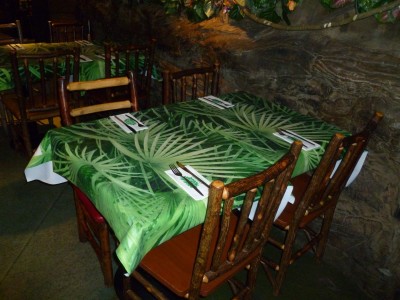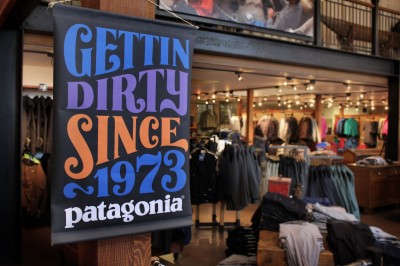
NatureWoven develops graphic materials from plant fibre sources which can later be shredded and composted.
Certifying shops
In 2008, a group of trade associations—including the Specialty Graphic Imaging Association (SGIA) and the Printing Industries Association (PIA)—established the Sustainable Green Printing Partnership (SGP) as a new non-profit organization to provide a certification label for graphics communications companies, recognizing best practices and continuous improvements in ‘green’ printing operations. SGP certification is based on criteria covering ‘input materials,’ including substrates, inks and coatings, as well as manufacturing processes and facilities.
Since then, the certification has become something of an industry standard and several sign substrate manufacturers, including Top Value Fabrics and 3M, have joined SGP as patrons. Top Value has engineered PVC-free textiles to minimize the negative impact of toxic plasticizers and fillers, while 3M has developed polyolefin films that contain no chlorine and use substantially less solvent than traditional vinyls.

In 2011, Roland DGA introduced what it called the industry’s first PVC-free adhesive-backed glossy paper for eco-solvent printing.
As mentioned, SGP’s certification criteria apply to printing companies, including sign shops, and cover design aspects related to substrates. Specifically, SGP requires facility managers to “evaluate the most efficient use of materials, layout and substrate characteristics,” including but not limited to the following:
- Biodegradability.
- Compostability.
- Recyclability.
- Recycled content (pre- and post-consumer).
- Organic textile material content.
- Petroleum-derived content.
- PVC content.
- Virgin fibre paper sources.
Answering the call
Other manufacturers are responding accordingly. In 2011, for example, inkjet printer and cutter vendor Roland DGA introduced what it called the industry’s first PVC-free adhesive-backed glossy paper for eco-solvent printing. The paper-based material was designed as an alternative material for decals, labels and contour-cut graphics.
Later in the year, pressure-sensitive adhesive manufacturer Mactac launched a new line of polypropylene-based (PP-based) films and overlaminates as greener alternatives to vinyl media for wide-format printing. The chlorine- and phthalate-free media were designed for indoor or medium-term outdoor applications on flat or slightly curved surfaces, including window graphics, POP displays and decals.
Ultraflex, another substrate manufacturer, has taken different tack by adapting PVC in such a way to make it greener. Its non-toxic ‘bio-based’ formula, at very low levels, can enable decomposition in a landfill, whereby carbon and hydrogen are partly consumed by biomass organisms and partly released through fermentation as methane, which can be harvested for use as fuel.
The film’s chlorine content, meanwhile, is partly consumed and partly converted into soluble chloride, which can be used as a fertilizer. Indeed, in experiments where the film was decomposed as compost for potting soil, plants and vegetables sprouted more rapidly.

Mainstream retailers like Patagonia have specifically requested NatureWoven materials for their display graphics.
The company also focuses on textile media, including recyclable polyesters (which themselves include 20 per cent recycled content) with biodegradable water-based coatings, recyclable natural cotton materials with water-based coatings on one side and naturally fire-retardant textiles woven from organic plant fibre.
Another company, NatureWoven, is targeting the billboard and large-scale POP graphics markets, which have traditionally used petroleum-based synthetics. The company’s materials begin life as fibres in plants (including jute, cotton and natural latex from rubber trees), become signage and then complete the cycle as natural fertilizers to improve soil quality. They can be shredded and safely disposed of in commercial vermicompost facilities, rather than landfills.
Since NatureWoven’s compostable materials became available in North America in 2010, mainstream retailers like Billabong, Patagonia and Whole Foods have specifically requested them for their advertising campaigns. Like the new Super C grocery store, these examples show how sustainability is becoming important not just for the planet, but also for sign shops’ business.
With files from GBC, Designtex, SGP, Top Value Fabrics, 3M, Roland DGA, Mactac, Ultraflex and NatureWoven. For more information, visit www.groupeboconcept.com, www.designtex.com, www.sgppartnership.org, www.topvaluefabrics.com, www.3m.com, www.rolanddga.com, www.mactac.com, www.ultraflexx.com and www.naturewoven.com.





